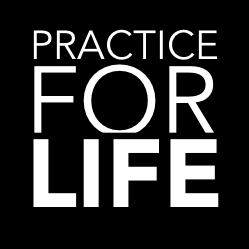 Many teachers already incorporate mindfulness in their teaching without formal training: focusing their pupils’ attention on a subject; encouraging them to think clearly; supporting them to be aware of their own thoughts and feelings. Some teachers use more explicit techniques – my brother in law uses relaxation exercises as part of his drama teaching. In lots of ways mindfulness simply supports what teachers have known all along – that when we are present we can learn more effectively, understand the subject, ourselves, other people – and ultimately our world, more clearly. Training in mindfulness can help pupils and teachers develop their understanding and experience of these practices.
Many teachers already incorporate mindfulness in their teaching without formal training: focusing their pupils’ attention on a subject; encouraging them to think clearly; supporting them to be aware of their own thoughts and feelings. Some teachers use more explicit techniques – my brother in law uses relaxation exercises as part of his drama teaching. In lots of ways mindfulness simply supports what teachers have known all along – that when we are present we can learn more effectively, understand the subject, ourselves, other people – and ultimately our world, more clearly. Training in mindfulness can help pupils and teachers develop their understanding and experience of these practices.

 I am certified to teach the .b mindfulness course for 11-18 year olds, the .b Foundations course for teachers, and Stanford University’s mindfulness and compassion course (CCT) for pupils and teachers. I am also a Forest School Leader and Youth Wellbeing & Resilience trainer with MIND. I can’t tell you how much I enjoy bringing transformative practices and experiences to pupils and teachers.
I am certified to teach the .b mindfulness course for 11-18 year olds, the .b Foundations course for teachers, and Stanford University’s mindfulness and compassion course (CCT) for pupils and teachers. I am also a Forest School Leader and Youth Wellbeing & Resilience trainer with MIND. I can’t tell you how much I enjoy bringing transformative practices and experiences to pupils and teachers.
As well as these courses I offer:
- Introductory sessions and assemblies for teachers or pupils
- INSET sessions to help teachers offer mindfulness and meditation in classrooms
Please contact me to discuss details.
If you’d like a youth wellbeing session for pupils from MIND please contact Mindkit (NB theses are free for schools and youth organisations based in the London Borough of Richmond, and other partaking boroughs, and approximately £200 outside of those boroughs).
The .b mindfulness course for students
At the most simple level .b is an awareness-raising course of 10 classes, offering 10-18 year olds a taste of mindfulness so that they know about it and can return to it later in life if they think it might help. However, for many pupils the course can relatively quickly lead to very positive outcomes: they feel calmer and more fulfilled; they can concentrate better; they have a toolkit to deal with stress and anxiety.
What are the benefits of .b for the students?
.b intends to help the young people to overcome difficulties, thrive and flourish – and the research that has taken place into its effectiveness suggests it does indeed have the potential to meet these more ambitious goals. For more information please visit the Mindfulness In Schools Project.
.b aims to help young people:
- To experience greater well-being (e.g. feel happier, calmer, more fulfilled)
- To fulfil their potential and pursue their own goals e.g. be more creative, more relaxed, academically, personally
- To improve their concentration and focus, in classes, in exams and tests, on the sports field, when playing games, when paying attention and listening to others
- To work with difficult mental states such as depressive, ruminative and anxious thoughts and low moods
- To cope with the everyday stresses and strains of adolescent life such as exams, relationships, sleep problems, family issues
What .b is not
You may well meet with misconceptions about what .b is, or even have some yourself. Here is some clarity on what .b is not that can guide your responses.
- Soft, fluffy, hippy dippy. There is a solid evidence base for teaching mindfulness which comes from careful evaluations of interventions, including some randomised control trials, and clear support from the evidence from brain imaging and the developing findings of neuroscience. It is summarised in the paper we have produced ‘Evidence for the Impact of Mindfulness on Children and Young People’.
- A disciplinary technique. Many people experience mindfulness as calming and over time many pupils do behave better, but that is not the main point, and if pursued for its own sake is likely to backfire with some resentful pupils. Mindfulness has to be for the learner themselves to help experience what is going on for them right now (including agitation, anger, the urge to fidget etc).
- Buddhism by the back door. Mindfulness has been developed from a Buddhist base but it is totally secular and can be engaged in by anyone of any faith, or none.
.b Foundations in mindfulness course for teachers
The curriculum is a tailored version of the core mindfulness principles found in MBSR (Mindfulness-based stress reduction) and MBCT (Mindfulness-based cognitive Therapy), shaped to meet the needs of teachers in schools.
What will participants learn?
Through experiential group learning and discussion participants explore how mindful awareness can support their wellbeing. The training includes twenty minutes daily practice following guided mindfulness meditations at home.
Through the training staff can:
• learn practical ways to feel calmer and more present in their work and communication
• cultivate compassion for self and others
• develop together as a ‘mindfulness staff group’ in school
• feel that their wellbeing is valued by the school
• experience ‘in-person’ mindfulness teaching, offering a model for those who go on to teach pupils
